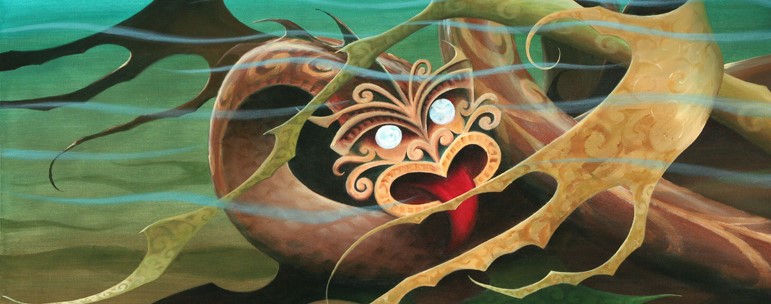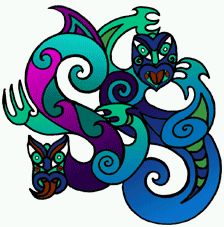
In the realm of New Zealand’s cultural tapestry, nestled within its rich heritage of myths and legends, lies the enigmatic figure of the Taniwha. These mythical creatures, often depicted as powerful guardians or fearsome water spirits, hold a significant place in Māori culture and continue to intrigue and captivate both locals and visitors alike. Among the various regions of New Zealand, Wellington, with its unique landscape and deep ties to Māori culture, provides a fascinating backdrop for exploring the history and significance of the Taniwha.
Origins
The origins of the Taniwha trace back to the oral traditions of the Māori people, who settled in New Zealand over a thousand years ago. In Māori cosmology, Taniwha are supernatural beings associated with bodies of water, such as rivers, lakes, and seas. They are believed to inhabit these watery realms, exerting their influence over the natural forces and creatures within their domain. Taniwha are often regarded as both protectors and guardians, with some stories depicting them as benevolent spirits guiding and aiding humans, while others portray them as formidable creatures capable of wreaking havoc upon those who dare to disturb their habitat.
The significance of Taniwha in Māori culture extends beyond mere mythological creatures; they are woven into the fabric of daily life, serving as metaphors for natural phenomena, guardians of ancestral lands, and symbols of cultural identity.
Legends
Throughout New Zealand’s history, tales of encounters with Taniwha have been passed down through generations, each narrative adding layers of mystery and intrigue to their story. In Wellington, with such access to the harbour and the ocean, there have been many Taniwha sightings which have since become legend.

One such legend tells of the Taniwha Pari-kawhiti, said to dwell in the waters of Wellington Harbor. According to local lore, Pari-kawhiti is a guardian spirit tasked with safeguarding the harbor and its inhabitants. Fishermen and sailors often invoke its name for protection before venturing out to sea, believing in its watchful presence beneath the waves.
Another tale recounts the story of Ngake and Whātaitai, two mythical Taniwha whose legendary struggle shaped the landscape of Wellington. As the story goes, Ngake, a powerful Taniwha, sought to escape the confines of his watery home by propelling himself against the rocks, creating the iconic geographic feature known as Te Whanganui-a-Tara. Whātaitai, a rival Taniwha, attempted to follow suit but met a tragic fate, becoming stranded and transforming into the landform now known as Matiu/Somes Island, a prominent landmark in the harbour.
Significance

In contemporary New Zealand society, the legacy of Taniwha continues to resonate, manifesting in various forms of artistic expression, cultural practices, and community engagement. From artwork adorning public spaces to educational initiatives aimed at preserving indigenous knowledge, the presence of Taniwha serves as a reminder of the enduring connection between land, sea, and people.
Moreover, the symbolic significance of Taniwha extends beyond Māori culture, breaking ethnic boundaries to become emblematic of New Zealand’s unique identity and environmental stewardship. As guardians of the natural world, Taniwha embody the principles of kaitiakitanga (guardianship) and manaakitanga (hospitality), reminding humanity of its responsibility to protect and respect the Earth and all its inhabitants.
The history of Taniwha in New Zealand, particularly in Wellington, is a testament to the enduring power of myth and legend in shaping cultural narratives and collective identities. As guardians of the land and sea, these mythical beings embody the interconnectedness between humanity and the natural world, reminding us of the importance of preserving and honoring our cultural heritage and environmental heritage. In a rapidly changing world, the wisdom of the Taniwha serves as a guiding light, illuminating the path towards a more sustainable and harmonious future for all.